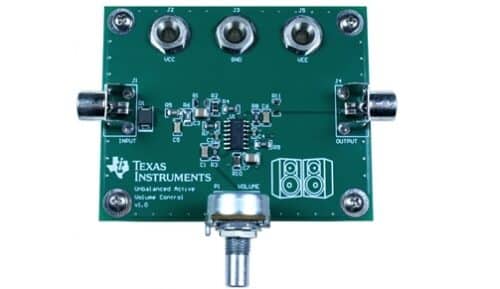This reference design is for a high-quality volume controller for professional audio. It reduces any distortions and unwanted noise and preserves the original quality of the sound.

A fully assembled board Active Volume Control for Professional Audio (Source: TI)
If you love to listen to music or own an audiophile music system, then you must know how irritating it is to use a generic low-quality add-on which always degrades the quality of sounds. But one of the most important control in any music system is volume control. Although the design of a volume controller seems straight forward, in reality, it is not.
This reference design from Texas Instruments (TI) can allow you to design a high-quality active volume control. This split-supply, high-performance volume control circuit attenuates a professional line-level audio signal with minimal distortion and noise. This design preserves the behaviour of the system independent of the audio input source impedance, it also removes noise from outside the audio band, and protects the system against overvoltage spikes.
Active volume controls in general have several other advantages over their passive counterparts. The use of amplifiers allows for gain early in the signal chain, improving noise performance. The current drive capabilities of the amplifiers allow low resistance values to be used, which minimizes Johnson noise and capacitive crosstalk. Finally, the high input impedance and low output impedance of the amplifiers ensure a robust design that, with some minor exceptions, maintains its performance independent of the source and load impedance.
Volume control is a critical component of any audio system. Because of the dynamic nature of audio, and the amount of variance in the output amplitudes of different signal sources, it is necessary for a user to have control over the amount of gain provided by an audio circuit. The reference design features a split supply that enables minimal distortion and noise. To remove the noise caused by the environment, a radio frequency (RF) filter is added to the circuit, the design also features an input buffer that preserves the behaviour of the system independent of the audio input source impedance.
With minimum modification, this design can also be used to control the speed of the DC motor. It can be used in various applications including guitar amplifiers, electric toothbrush speed control, treadmill speed control, etc.
This reference design has been tested by TI. The company has also provided additional resources such as schematics, Gerber files, etc. You can find additional data about the reference design on the company’s website.
To read more about this reference design click here.





